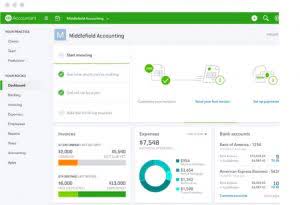
A former law firm administrator and legal assistant, Annette spent 11 years with the Century City firm Greenberg, Glusker, Fields and Mactinger before earning her MBA at UCLA’s Anderson School. Annette is a profit law statement certified QuickBooks ProAdvisor and a Clio Certified Consultant. It matters because it shows investors, analysts, and business owners whether a company is making or losing money. A careful review of the P&L also can stimulate ideas for cutting expenses and increasing revenue.
- By making changes to improve your margins, you can increase net revenue for the following months.
- Analysts must go beyond the profit and loss statement to get a full picture of a company’s financial health.
- Financial reporting is important for understanding the bigger picture in terms of cash flow and other business needs.
- The profit and loss statement (P&L) of Alphabet (GOOGL)—derived from financial data platform Daloopa—is presented below to illustrate the format of an income statement.
- Download the fully customizable example template to see how the numbers work and fill in your own figures.
- Publicly traded companies are actually required to prepare and file a profit and loss statement with the U.S.
- Law firm accounting is the detailed process of managing a firms finances, including recording, classifying and reporting of financial information.
Other financial tracking forms
With a basic, single-step profit and loss statement, you will be able to see the business’ net income—also commonly referred to as its bottom line—at a glance. If you’re drafting a P&L statement solely for accounting purposes or to get a general idea of the company’s performance, this simplified approach may be all you need. However, this may not be enough to satisfy investors or creditors who will want more detailed information on where your business is spending money and why. A profit and loss (P&L) statement, also known as an income statement, is a financial statement that summarizes a company’s revenues, costs, expenses, and profits/losses for a specified period. Understanding your financial statements, such as the P&L statement, is essential for pinpointing potential improvements, such as curbing expenses or channeling focus towards more lucrative products or services.
- The P&L statement follows the general format shown in the example below (see “Example of a P&L Statement.”).
- To calculate the operating income, operating expenses are deducted from the gross profit.
- Using the accrual method of accounting, revenue is reported when earned at the time of sale, even if payments have not yet been received.
- It is important to take a thoughtful approach when drafting or revising nonprofit bylaws.
- Traditional bank and SBA loans generally are known for collateral requirements.
- We’ve also indicated when to use each formula in our step-by-step instructions for preparing a basic profit and loss statement.
Company and team

Further, boards should remember that the purpose statement in the articles does not need to be the charity’s current mission statement or the result of careful wordsmithing for marketing purposes. Very few, if any, donors will make the decision to donate based on the purpose statement in the articles, particularly if it contains the broad language described above. There are also situations in which a P&L statement can help you weather a potential storm. For example, if you’re audited by the IRS at any point, you will need to show financial statements demonstrating your activities and how they have contributed to your current financial situations. The following exhibit contains a common presentation format for a profit and loss statement. How you analyze your company’s profit and loss statement will largely https://www.bookstime.com/articles/general-ledger-reconciliation depend on your goals for doing so in the first place.

Operating expenses

Revenues and expenses for nonprofit organizations are generally tracked in the statement of activities. This report is sometimes called a statement of financial activities or a statement of support. The P&L statement balance sheet follows the general format shown in the example below (see “Example of a P&L Statement.”).
Essentially, the profit and loss statement showcases your ability to identify complex business problems and articulate how you solved them from a financial standpoint. Rather than risk a conflict between the articles of incorporation, the bylaws, and the organization’s actual activities, stick to a broad charitable purpose clause that will permit the organization’s activities to evolve over time. This, in conjunction with tax returns and other financial statements, will help present a clear picture of your business needs and current situation. It will help lenders, whether banks, individuals, or other financial institutions, make informed business decisions as to whether or not they will give you that loan.
- Plus, if you ever apply for a business loan, your creditor will likely require you to provide this level of documentation before they agree to lend to you.
- Integrate your Wise business account with Xero online accounting, and make it easier than ever to watch your company grow.
- Many ambitious boards impose numerous procedures with strict deadlines in the Bylaws.
- It calculates net income by subtracting expenses and losses from revenues and gains.


